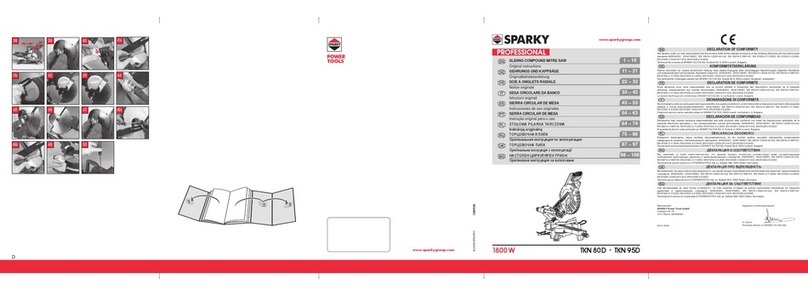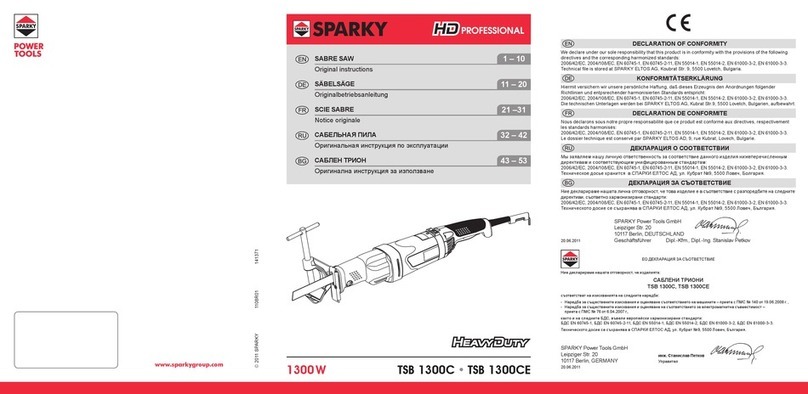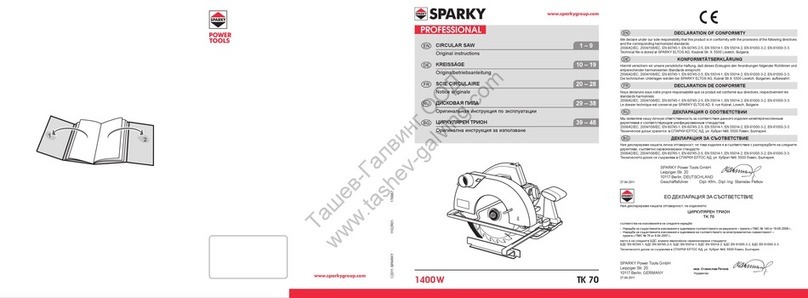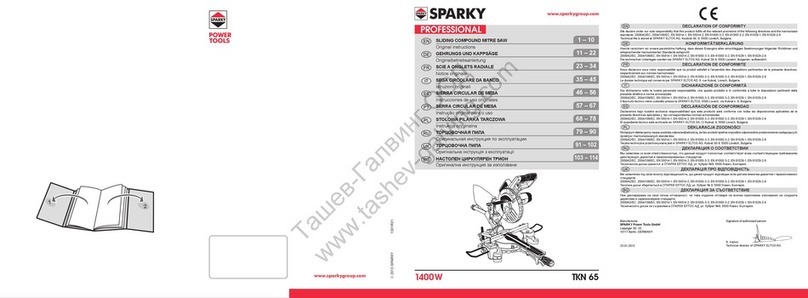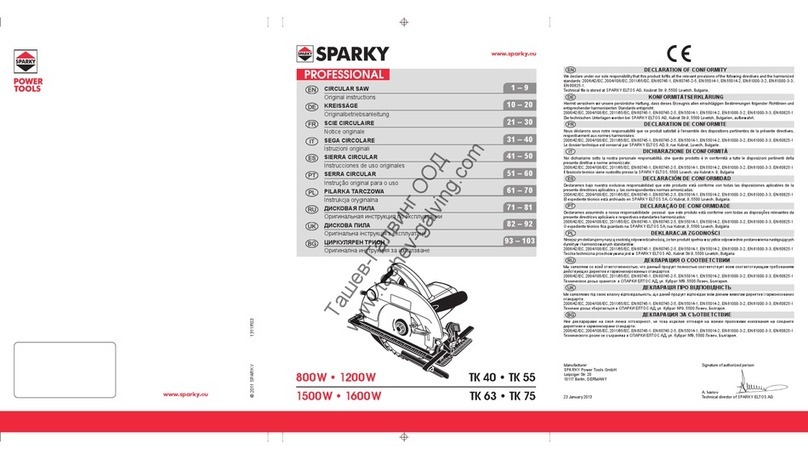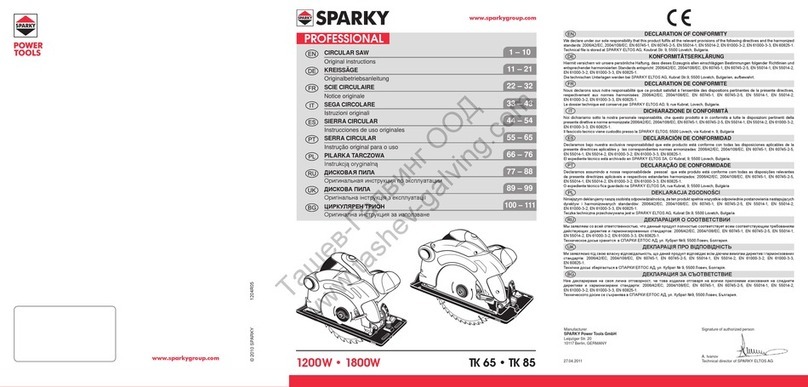application is achieved experimentally during
operation. Use the information from the table to
choose the speed initially. Rotate the regulator
thumbwheel to place the selected position (let-
SAWING
to prevent electric shock. The gear housing, the
support and the blade can become live if during
operation the saw comes into contact with a live
wire. Hold the machine for the rear handle (4)
-
sibility for electric shock to the minimum.
the machine, so that the bracket shaft (19) in-
serts the joint opening (15) on the machine
groove (16).
square cutting is clean from chips and dirt as
this might result in improper positioning of the
work piece and lack of perpendicularity.
the pipe in such a way, so that the clamping
screw is perpendicular to the pipe.
Tighten with the clamping screw taking care not
to deform the pipe.
Depending on the hand you prefer to use, grasp
and, the machine handle (4) with the other hand
and switch the machine on.
While holding the rear handle (4) with the switch
sawing. Pull the machine rear until the work
piece is cut through.
To achieve better results when cutting pipes
to switch the machine on when the saw blade
touches the work piece.
to protect the blade, adjust the pressure on the
material by slower or faster pulling the machine
rear.
Excessive force does not increase the speed.
Free-hand cutting
work piece securely in a vice or another appro-
To achieve clean cuts when straight cutting
metal or curve cutting (wood, plastics, aerated
concrete, etc.) it is necessary to keep the sup-
the time.
Use only sharp faultless blades, suitable for
the material being cut and with the necessary
length.
Take care to cut at uniform feeding speed to
ensure fast, easy and exact cutting. Excessive
force does not increase the speed, but results in
machine overloading and reduces blade life.
Hold the machine tightly and keep the sup-
-
ing operation.
Always keep the cord toward the machine rear
during operation away from the cutting area.
Plunge cutting (Fig. 4)
-
into the material, and then - to make a hole in
the material.
the saw on the support (1), and the blade tip (13)
- on the marked cutting line. Switch the saw on
and slowly and carefully raise the rear handle,
trying to keep the support (1) permanently in
contact with the material. Rotate the saw until
the blade (13) has plunged entirely into the ma-
terial, and then continue cutting in the desired
direction.
We do not recommend plunge cutting in hard
materials to avoid the risk of injury.
hole suitable for the blade size.
against the material during cutting. Thus you will
achieve uniform operation and lower vibrations.
low viscous lubricant-coolant emulsions to as-
sist chips removal and reduce the temperature
in the cutting area. The use of lubricant-coolant
emulsions increases blade life.
Do not use highly viscous lubricant-coolant
emulsions (thick oil and grease), as they ham-
per the chip ejection and heat dissipation from
the cutting area, and reduce blade life.
Machine use intensity
The driving motor power of this machine enables
cutting 6
“
-
rated during this operation, as well as during
cutting solid metal and wood with dimensions
-
crease of the machine gear temperature.
Despite the use of special high-temperature
grease for the machine gear, exceeding the
temperature above certain critical level causes
oil evaporation from the grease and visible
smoke from the gear. This is an evident indica-
